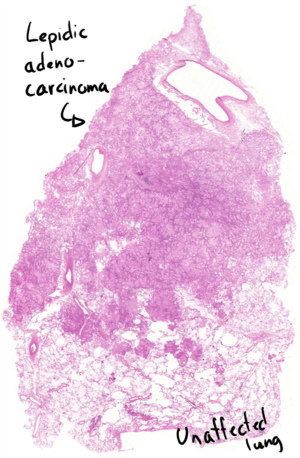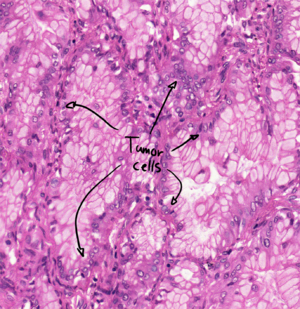51. Lepidic adenocarcinoma
Staining: HE
Organ: Lung
Description:
The slide has two zones. The lower zone shows healthy, unaffected lung parenchyme.
The upper zone shows normal structure of the alveoli, however the insides of the alveoli are lined by tumor cells.
Diagnosis: Lepidic adenocarcinoma
Causes:
- Genetic mutations
- EGFR
- KRAS
- ALK
- PDL-1
Theory:
Five types of lung adenocarcinomas exist:
- Papillary type
- Acinar type
- Solid type
- Micropapillary type (worse prognosis)
- Lepidic type (best prognosis)
This histology slide shows a “lepidic” growth pattern, which is the pattern where the tumor cells line the alveolar walls instead of invading the interstitium. The alveolar structure is therefore maintained.
It’s technically an adenocarcinoma in situ because it hasn’t passed the basement membrane yet.



